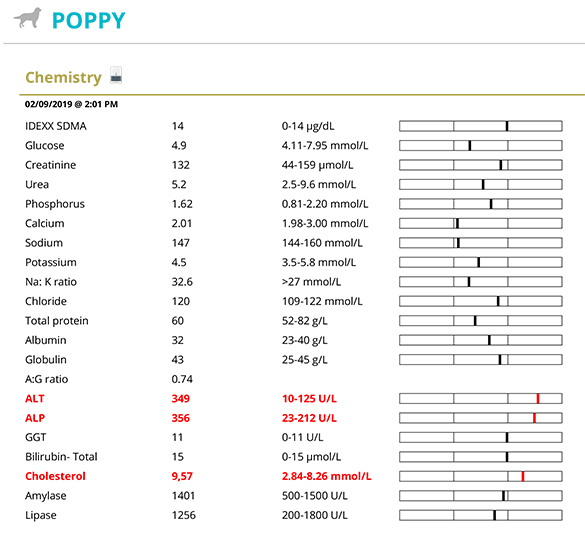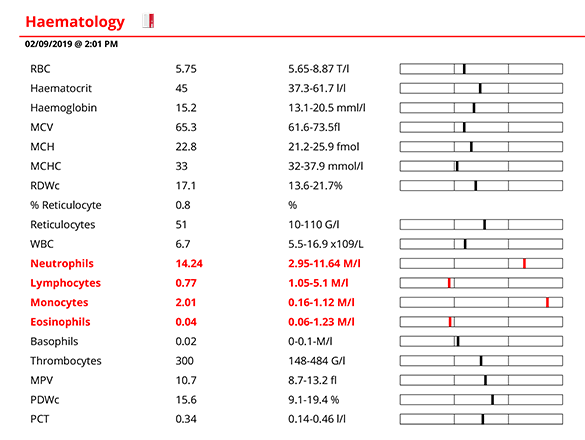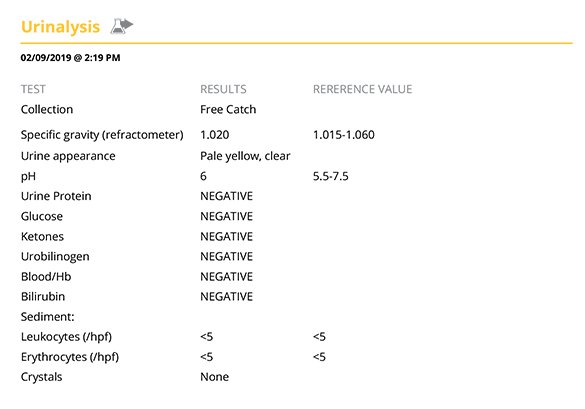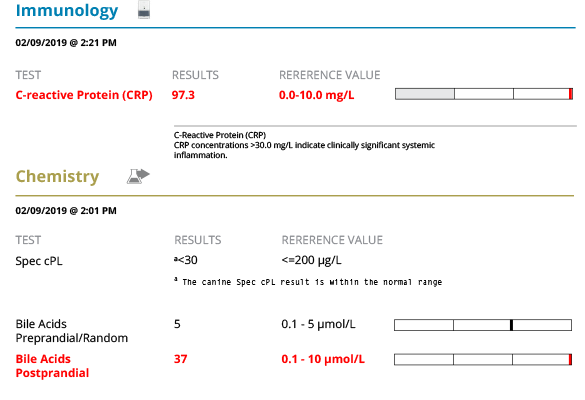Minimum DataBase
Case study: Poppy
Courtesy of Robert White Adams MRCVS of Companion Care, Weston Super Mare

Background information
Name: Poppy
Age: 11 years
Breed: Cocker Spaniel
Gender: Female neutered
History and presenting reason
When she was 4 years old, she had an extensive skin work-up at our practice, as well as with a referral dermatologist, for one of the most stubborn allergic cases of atopy I have ever encountered. All diagnostic options were exhausted and her final diagnosis of ‘severe atypical atopy’ remains a frustration for both myself as well as the referral dermatologist.
She didn’t respond to any treatment other than corticosteroids. We tried immunotherapy, elimination and hypoallergenic diets, supplements, cyclosporine, oclacitinib…as well as another dozen or so drugs from the dermatologist’s dispensary which I had never even heard of before. So regretfully, five years ago we ended up condemning Poppy to a life of steroid-use, and a daily Medrone pill has very much been her friend ever since. To be fair, it seemed to keep her happy and dermatitis free.
About two months ago I saw Poppy for her 6-monthly check-up. All seemed ok but I notice looked a little bloated and breathless, and her owner reported she had started to ‘show her age’. In hindsight she had been slowing down for a while. I found myself thinking “we must have finally caused the inevitable iatrogenic Cushing’s” and so I carried out a few tests.
Interpretation of results
We started with a Minimum DataBase (consisting of haematology, chem 17, electrolytes and SDMA and urinalysis).
Urinalysis was unremarkable with a USG 1.020. Her blood results were more interesting.
There was the expected steroid/stress leucogram on haematology which we had spotted in her blood results from the previous year, but all parameters had increased slightly. There were now also moderate elevations in ALT, ALKP and cholesterol. All pretty convincing of my initial suspicion on iatrogenic Cushing’s and I had already planned a dexamethasone suppression test as the next test until the CRP result caught my eye. CRP was markedly elevated which didn’t fit with the suspected diagnosis of Cushing’s. CRP should not be affected by Cushing’s or steroids, no matter how chronically they have been used.
The CRP result meant I changed my plan and I ran a bile acid stimulation test (BAST) and sent a blood sample off for canine pancreatic lipase (cPL). cPL was normal but the BAST results weren’t. The following day a liver ultrasound showed a surprisingly normal liver but markedly distended gall bladder and bile duct with visibly thickened walls and sludgy echogenic contents throughout (and believe me, the changes must have been marked for my eyes to see them on ultrasound!). A guided FNA sample was taken from the gall bladder and the aspirate came out looking like frank pus. We were not surprised when cytology and culture confirmed an E.coli cholangitis. By the time we received the lab results, Poppy had already been on antibiotics for 4 days and was already reported as being a different dog much brighter and happier.
We continued treatment for a fortnight, and repeated bloods. Her white cell profile improved (never got back to normal levels but ‘normal’ for a chronic Medrone-abuser!) as well as her liver parameters, with just a slight elevation in ALKP remaining. CRP was now entirely within normal limits which confirmed the cholangitis had resolved.
I don’t know how long the cholangitis had been brewing for and/ or how much the steroids had contributed to its development and/or how much they had hidden its signs. All I know is that I’ve not (knowingly) treated many dogs with cholangitis but I always presumed they would present with signs such as vomiting, diarrhoea and abdominal pain and at least elevated bilirubin. Poppy showed none of these signs she had just been lethargic.
The change in Poppy’s demeanor since starting treatment has been remarkable. Her owner reports it’s like we have halved her age!
It was just too easy to fall into the trap of pattern recognition and attribute Poppy’s signs and blood results to long-term steroid treatment and subsequent idiopathic Cushing’s. Without the CRP result I could have easily missed or delayed her diagnosis wasting time with other tests.
Diagnostic tests




What else do I need to know?
CRP is available as an in-house test for IDEXX Catalyst one and validated only in dogs